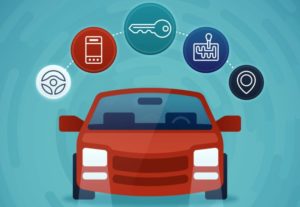June is Border Control & National ID Month 2016 at FindBiometrics. All month we will be examining the ins-and-outs of biometric citizen registry and identification—its applications, real life deployments, and how it is shaping the global community—as well as the way biometrics are protecting the borders of the nations they are helping to build. To start things off, here is a primer to get you up to speed on all the recent happenings in the worlds of biometric national identification and border control.
National ID Around The World
 Biometric national ID is taking the world by storm. Thanks to advances in mobility, efficacy, and accessibility in biometrics, countries around the globe are now able to offer their citizens the essential services and benefits offered by having an identity document. Banking, food subsidies, social security, international travel—these are just some of the benefits enabled for citizens when they enroll in a digital national ID program. And while a few massive scale ID projects hog the spotlight, the fact remains: biometric national ID is spreading to an increasing number of nations. Here are just some of the countries with either nascent or developed national ID programs, and how they are successfully implementing such important systems:
Biometric national ID is taking the world by storm. Thanks to advances in mobility, efficacy, and accessibility in biometrics, countries around the globe are now able to offer their citizens the essential services and benefits offered by having an identity document. Banking, food subsidies, social security, international travel—these are just some of the benefits enabled for citizens when they enroll in a digital national ID program. And while a few massive scale ID projects hog the spotlight, the fact remains: biometric national ID is spreading to an increasing number of nations. Here are just some of the countries with either nascent or developed national ID programs, and how they are successfully implementing such important systems:
Turkey Begins Issuance of Biometric IDs
Indian Gov’t Has Collected Biometrics of Almost a Billion Citizens
Green Bit to Provide Biometric Scanners for Jordan eID Project
Hungary Launches Biometric eIDs
Saudi Arabia Uses Biometric Identification on Pilgrim Visitors
Pakistan to Introduce Biometric Passports Next Year
The Good Old Drivers License
 Of course, some countries already have long established civil ID systems or alternative secure documents that can be used to enable all the perks that come with the government knowing you have an official identity. In the United States, for instance, your driver’s license can serve as your proof of identity. But just because it’s already implemented doesn’t mean it can’t be upgraded to fit with the biometric paradigm. In the USA we are seeing biometric and mobile-based driver’s licenses emerge, combining biometric assurance and the convenience of mobility.
Of course, some countries already have long established civil ID systems or alternative secure documents that can be used to enable all the perks that come with the government knowing you have an official identity. In the United States, for instance, your driver’s license can serve as your proof of identity. But just because it’s already implemented doesn’t mean it can’t be upgraded to fit with the biometric paradigm. In the USA we are seeing biometric and mobile-based driver’s licenses emerge, combining biometric assurance and the convenience of mobility.
Washington State to Issue Biometric Driver’s Licenses
Iowa Tests Mobile Driver’s Licences
Border Control Around the World
 Just as national ID is a worldwide biometric application, so is border control. Acuity Market Intelligence is forecasting the global ABC eGate and kiosk market as on track to reach $1 billion in annual revenue by 2020, and it’s clear that the technology is spreading as we see deployments and initiatives sprout up all over the world, bringing biometric security and convenience to border crossings. Here are just some of the countries that have committed to improving their borders with biometrics:
Just as national ID is a worldwide biometric application, so is border control. Acuity Market Intelligence is forecasting the global ABC eGate and kiosk market as on track to reach $1 billion in annual revenue by 2020, and it’s clear that the technology is spreading as we see deployments and initiatives sprout up all over the world, bringing biometric security and convenience to border crossings. Here are just some of the countries that have committed to improving their borders with biometrics:
Curaçao Airport Deploys Vision-Box ABC Solution
Charles de Gaulle Airport to Trial Facial Recognition System
Morocco Awards Contract for Huge Biometric Border Project
Barbados Gov’t Delays Launch of Biometric Border Screening
Japan Seeks Facial Recognition for Border Security
Morpho to Provide Tech for Singapore Airport’s FAST Project
Trinidad & Tobago Considers Biometric Screening at Airports
The Many Modalities of Border Control
 Safran Identity & Security (formerly Morpho) has predicted that border control is destined to become multimodal, like so many verticals have been skewing recently. Such a future is not difficult to imagine considering the range of modalities that are already being used around the world at border crossings. Iris, face and fingerprint are the most common, and each have their strengths when serving border control applications. The following articles will give you an idea of how different biometric modalities fit into the large picture of border control.
Safran Identity & Security (formerly Morpho) has predicted that border control is destined to become multimodal, like so many verticals have been skewing recently. Such a future is not difficult to imagine considering the range of modalities that are already being used around the world at border crossings. Iris, face and fingerprint are the most common, and each have their strengths when serving border control applications. The following articles will give you an idea of how different biometric modalities fit into the large picture of border control.
Multimodal Biometric Security is the Future of Border Control: Morpho
Iris ID Provides Crucial Biometric Tech for CBP Border Project
Aruba Airport Expands Vision-Box eGate Solution
Canadian Authorities Test Facial Recognition Screening for Border Security
Dermalog Deploys eGate Solution in Maldives
Biometrics and The Migrant Crisis
 As an international community we are currently facing a migrant crisis. People seeking refuge from nations and states for reasons of personal safety, politics, and war are being taken in by host nations on multiple continents. One of the major challenges that comes with serving refugees, caring for them, and finding them a home, is that without a home nation they are also without manageable ID. Not to mention, identity theft is not uncommon in refugee camps. To solve this problem head on, the UNHCR and other government bodies have worked with a number of biometrics technology providers to implement biometric identification for refugees all across the globe.
As an international community we are currently facing a migrant crisis. People seeking refuge from nations and states for reasons of personal safety, politics, and war are being taken in by host nations on multiple continents. One of the major challenges that comes with serving refugees, caring for them, and finding them a home, is that without a home nation they are also without manageable ID. Not to mention, identity theft is not uncommon in refugee camps. To solve this problem head on, the UNHCR and other government bodies have worked with a number of biometrics technology providers to implement biometric identification for refugees all across the globe.
The following links will give you insight into some of the many ways biometric tech is helping give refugees the identity that is theirs by right.
German Officials Deploy Crossmatch Tech at Refugee Centers
UN Refugee Agency Brings Biometric IDs to South Sudan
DERMALOG to Highlight Tech’s Role in Refugee Crisis at CeBIT
UN’s Biometric Refugee ID Rollout Starts in Thailand
Malaysia Urged to Adopt Biometric IDs for Refugee Crisis
UN Agency Selects Accenture for Refugee Biometrics Project
Crossmatch Biometrics Tech To Register Migrants in Greece
Biometric ID and National Security
 With biometric national ID the government can better know its population—not just who they are, but where they are travelling and for how long. In today’s global climate of terrorism, national ID can therefore be invoked as a powerful security tool. In Nigeria, biometric national ID is being used to fight terrorist organization Boko Haram, while in India, the government is trying to pass legislation that would allow it to use the formidable Aadhaar database as a law enforcement tool.
With biometric national ID the government can better know its population—not just who they are, but where they are travelling and for how long. In today’s global climate of terrorism, national ID can therefore be invoked as a powerful security tool. In Nigeria, biometric national ID is being used to fight terrorist organization Boko Haram, while in India, the government is trying to pass legislation that would allow it to use the formidable Aadhaar database as a law enforcement tool.
Indian Gov’t Seeks to Open Aadhaar Data to Security Agencies
Biometric National ID Invoked to Fight Boko Haram
By Air, Land and Sea
 There’s more than one way to enter and exit a country, and where it be by land, sea or air, biometrics is making the process more accountable and convenient while keeping nations secure. Biometric pre-screening programs are being aimed at reducing airport wait times, while solutions like the one being piloted at the Otay Mesa land border crossing in the United States is bringing biometrics to the boundaries you can drive to. Seaports are also a point of entry, and biometrics are being used to process travelers there too. Take a look at how you can encounter biometrics at every type of port:
There’s more than one way to enter and exit a country, and where it be by land, sea or air, biometrics is making the process more accountable and convenient while keeping nations secure. Biometric pre-screening programs are being aimed at reducing airport wait times, while solutions like the one being piloted at the Otay Mesa land border crossing in the United States is bringing biometrics to the boundaries you can drive to. Seaports are also a point of entry, and biometrics are being used to process travelers there too. Take a look at how you can encounter biometrics at every type of port:
MorphoTrust Highlights PreCheck as TSA Wait Time Solution
TSA PreCheck Enrollments Pass Two Million Mark
SITA ABC eGates Improve Passenger Processing at Naples Airport
Unisys Tech Used in CBP Border Screening Trial
Vision-Box Aims New Platform at ‘All Air, Land and Sea Borders’
Singapore to Implement Biometric Screening at All Points of Entry
Customs and Security
 Border control isn’t only about making sure travelers are following air travel protocols, it’s also about keeping an inventory of the people, goods, and substances entering and exiting a country. To that effect, biometrics are playing a strong role in customs enforcement—one of the key areas where bometrics and mobility intersect with border security.
Border control isn’t only about making sure travelers are following air travel protocols, it’s also about keeping an inventory of the people, goods, and substances entering and exiting a country. To that effect, biometrics are playing a strong role in customs enforcement—one of the key areas where bometrics and mobility intersect with border security.
CBP Orders Ruggedized Identification Kits from MorphoTrak
ICE Agents to be Equipped with NEC Mobile Identification Solution
IBIA Calls on DHS to Embrace Biometric Entry-Exit
US Political Support Grows for Biometric Exit Screening
Financial Inclusion
 Identity is a basic prerequisite for financial services, and in a world where billions of people are unbanked, biometric national registries can be a powerful tool. Using biometric identification databases, governments working with financial services providers can give the underserved access to banking, savings, pension services, and more. Here are just a few of the ways biometric registries cross over with finance.
Identity is a basic prerequisite for financial services, and in a world where billions of people are unbanked, biometric national registries can be a powerful tool. Using biometric identification databases, governments working with financial services providers can give the underserved access to banking, savings, pension services, and more. Here are just a few of the ways biometric registries cross over with finance.
Aadhaar Finding Impactful Links to Banking
Money20/20 Europe: MasterCard and Digital Identity
“I’M Alive” Program to Register Lagos Pensioners’ Biometrics
Government eServices
 National ID can go beyond simply allowing for the implementation of basic essential services, it can also allow for existing government programs to be improved in terms of accountability and convenience. With the ability to verify your identity to the government, you can potentially access high risk services remotely. From tax filing to updating your address on government records, national ID can allow for easier interaction with your home nation’s institutions.
National ID can go beyond simply allowing for the implementation of basic essential services, it can also allow for existing government programs to be improved in terms of accountability and convenience. With the ability to verify your identity to the government, you can potentially access high risk services remotely. From tax filing to updating your address on government records, national ID can allow for easier interaction with your home nation’s institutions.
Indian Citizens Can Update Aadhaar Info Online
Biometric Visa Restrictions Underline The Demand For eServices
Tax Agencies Tap MorphoTrust for eID Solution
Alabamians Can Use Selfie Authentication for Tax Filings
National ID and The Fight Against Fraud
 An application of national ID that we can see being implemented in India—which has one of the largest and most ambitious national ID programs in the world—is in bringing greater accountability to the public sector. Aadhaar ID has been implemented in time and attendance capabilities throughout the Indian government, in public workplaces, and even in schools. The following links will give you an idea of how these systems are deployed, and what obstacles they have faced.
An application of national ID that we can see being implemented in India—which has one of the largest and most ambitious national ID programs in the world—is in bringing greater accountability to the public sector. Aadhaar ID has been implemented in time and attendance capabilities throughout the Indian government, in public workplaces, and even in schools. The following links will give you an idea of how these systems are deployed, and what obstacles they have faced.
Aadhaar to Help Sort Students in State School System
Indian City Takes Out Trash with Aadhaar Attendance Tracking
Aadhaar Requirement for Workers Faces Backlash
Aadhaar Attendance-Trackers Rolling Out Across Delhi
Morpho to Use Aadhaar To Enroll Airtel Subscribers
The Importance of Enrollment
 National ID programs depend on enrollment. Without the biometrics of the people, a citizen registry is missing its most human element. The links below concerning Aadhaar enrollment will shed light on just how large a task on-boarding can be when trying to register millions upon millions of citizens.
National ID programs depend on enrollment. Without the biometrics of the people, a citizen registry is missing its most human element. The links below concerning Aadhaar enrollment will shed light on just how large a task on-boarding can be when trying to register millions upon millions of citizens.
Aadhaar Milestone Gives Iris ID Reason to Celebrate
Morpho Celebrates Billionth Aadhaar Enrollment
*
Join FindBiometrics throughout June as we continue to examine biometric national ID in our featured articles section. Be sure to sign up for our upcoming expert webinar, Biometric National ID in a New Era of Migration, and follow us on Twitter so you don’t miss a beat.
National ID Month 2016 is made possible by our sponsors, NEC Corporation of America and MorphoTrak
—
June 1, 2016 – by Peter B. Counter


Follow Us